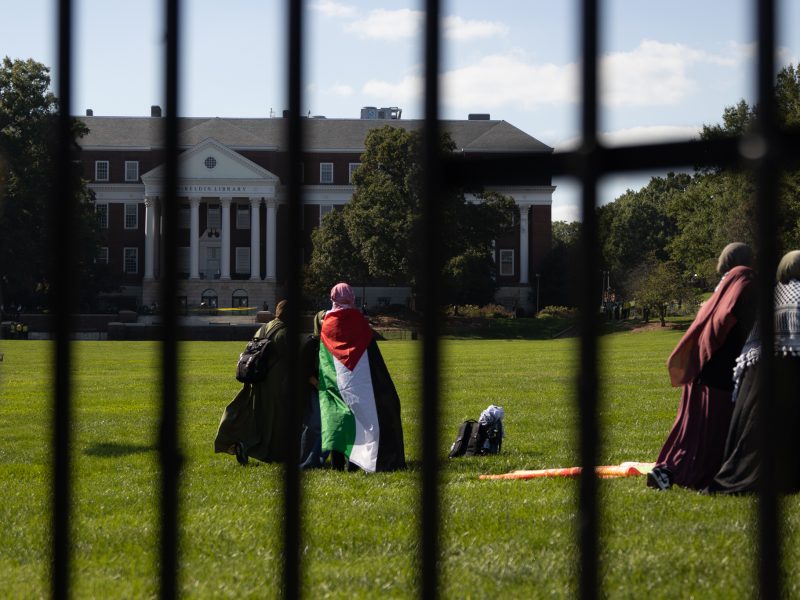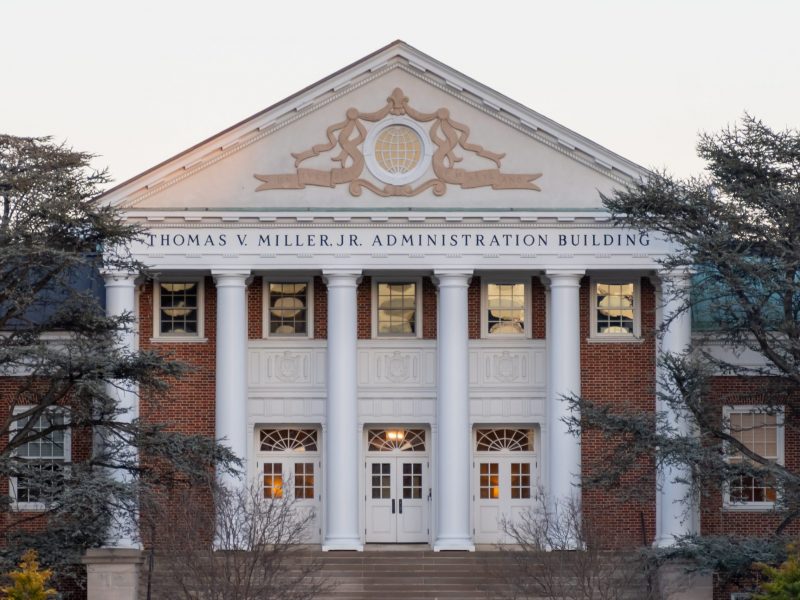
This model train represents the Purple Line light rail, which would run through the campus to connect Montgomery and Prince George’s Counties.
While this state prepares for a new governor, some are questioning his stance on construction of the Purple Line, which would connect this university to Bethesda and New Carrolton and is slated to begin development in 2015.
During the second debate, Hogan said he opposed mass transit projects, including the Purple Line, stating that the state should focus on fixing its “crumbling roads and bridges” before investing in new projects.
Since his election on Nov. 4, Hogan has declined to comment on any policy issues. His aides said he is using the transition to discuss issues such as the Purple Line and won’t announce his plans until after he is sworn in on Jan. 21. Meanwhile, local politicians and university officials said they will push Hogan to support Purple Line construction.
The project is expected to cost about $2.5 billion and is scheduled to open in 2020 after its five-year construction. The rail would have four stops in College Park, including one on Campus Drive near Stamp Student Union.
Sen. Jim Rosapepe (D-Prince George’s) said the Purple Line is “incredibly important” for College Park, and he will work with his colleagues in the legislature to defend it.
“Gov.-elect Hogan has expressed mixed views on this during his campaign,” Rosapepe said. “All of us are going to fight very hard to make sure the Purple Line stays on track. I’m hopeful that he will understand that it is very important for business climate. The Purple Line is his first good test of whether he’s sticking to his pro-business agenda.”
Prince George’s County Executive Rushern Baker has been a fervent Purple Line supporter, and his aides said he will push the governor-elect to propel the project forward.
“We consider it a vital project for a number of reasons: transportation, workforce movement, recreation, and the University of Maryland in particular is one of the biggest beneficiaries,” said David Iannucci, Baker’s senior economic development adviser. “I know the county executive is looking forward to sitting down face-to-face with the new governor and making those exact points to how important the Purple Line is to this region.”
College Park Mayor Andrew Fellows said he is confident Hogan’s business background will lead him to support the project once he looks more into the details.
“The reason the Chamber of Commerce is so supportive of the Purple Line is because they recognize that it’s good business,” Fellows said. “It’s been remarked that he hasn’t really looked at the Purple Line, and I think when he does he’ll see the value … and move forward with it.”
This university has already begun preparations for the project. The Purple Line is part of this university’s strategic plan to reduce the number of people parking on the campus. In addition, the construction timeline of the Edward St. John Learning and Teaching Center and the public health school were made in conjunction with the Purple Line schedule, so changes by the Hogan administration could add more costs, said Sree Sinha, Residence Hall Association president.
“Given how long we’ve been talking about this already, and how the campus, as well as the plans for the rest of the line, are or were pretty much set, further delay would be a frustrating disservice to the campus,” Sinha said.
This university is still preparing for the project as planned, said Carlo Colella, administration and finance vice president.
Colella would not speculate on what he thinks Hogan would do about the Purple Line. He said the university has been an advocate of the project for several years, and he expects to be able to provide input as Hogan makes his decision.
Department of Transportation Services Director David Allen is confident construction will continue as planned. He said the Purple Line will reduce the number of parking spaces and will keep Campus Drive a one-way street.
“There is a possible hitch with our new governor-elect, who has been outspoken about how he does not support the Purple Line,” Allen said. “But there are those who believe by the time he gets into office he will not be able to stop it. So we don’t expect any delays.”
Student Government Association President Patrick Ronk expressed a more dismal view of the Purple Line’s future, which he said came to his mind immediately following Hogan’s victory.
“To be honest, I think [the Purple Line] is probably one of the things that could be put on the chopping block,” Ronk said. “For proponents of the Purple Line, I don’t think this is a good thing. I think they should be worried.”
SGA Sustainability Director Ori Gutin said he hopes officials consider the environmental benefits of the Purple Line.
“We’re constantly looking for ways to make Shuttle-UM more efficient, increase bike ridership to campus, and ultimately get fewer people driving to campus,” Gutin said. “Having the Purple Line come to our campus would be huge in helping to accomplish that goal. So it is scary as an environmentalist to hear that Hogan may delay the Purple Line even longer into the future.”
Senior staff writers Talia Richman and Morgan Eichensehr contributed to this report


